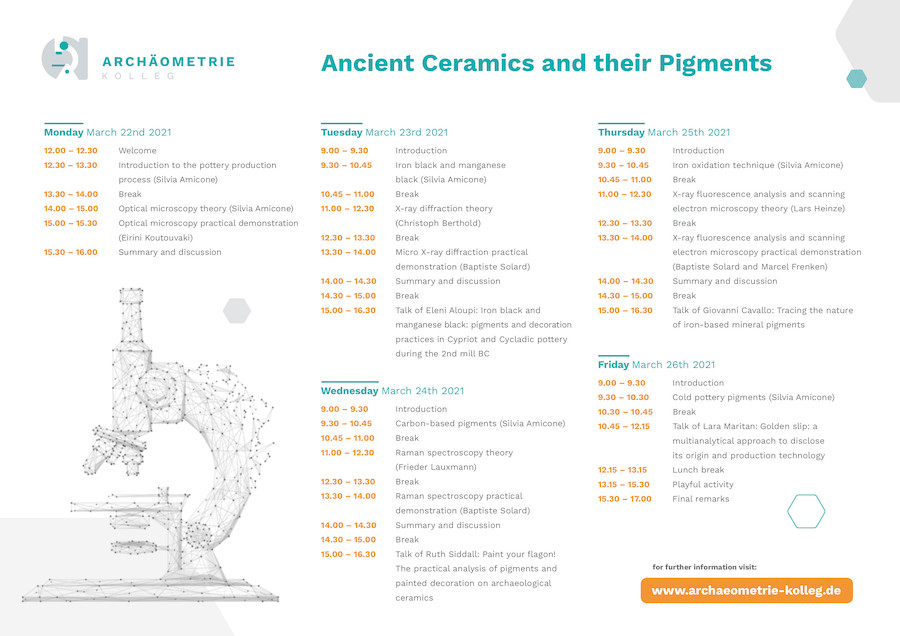News
29.04.2021
Ancient Ceramics and their Pigments Workshop - March 2021, Tübingen
It is with great enthusiasm that we share our experiences as participants in the workshop Ancient Ceramics and their Pigments. The workshop’s aim was to introduce attendees to current topics in the study of pigments and how they were produced and used in the past. More recently, archaeometric techniques used to analyze pigments on pots have provided innumerous opportunities for further research into systems of trade and production of ancient ceramics. Many of the methodologies discussed in this workshop have implications in the wider study of ceramics, archaeological science, and beyond.
The week-long workshop was hosted by the Competence Center Archaeometry - Baden-Wuerttemberg (CCA-BW) at the University of Tübingen. This event was organized by Dr. Silvia Amicone in collaboration with the Curt-Engelhorn-Centre Archaeometry (CEZA). The workshop is part of the Archäometrie Kolleg project, which is generously sponsored by the Klaus Tschira Foundation (KTS).
The layout of the workshop was well organized, and the online format provided the opportunity for many people all over the world to connect and discuss how the topics in this class can be applied to future study.
Micro-archaeology to characterize pigments
To begin to understand how ceramics are studied, Dr. Silvia Amicone introduced us to the vast world of ceramic production, as experimental archaeology is key in unifying archaeological materials to physical and chemical analyses such as scanning electron microscopy (SEM), X-ray diffraction (XRD), Raman spectroscopy, among other analytical techniques. Additionally, the importance of optical microscopy to providing context for such analyses was highlighted on the first day of the course. Following these talks, MSc student Eirini Koutouvaki demonstrated how this technique can be applied using a video microscope and a polarizing microscope.

